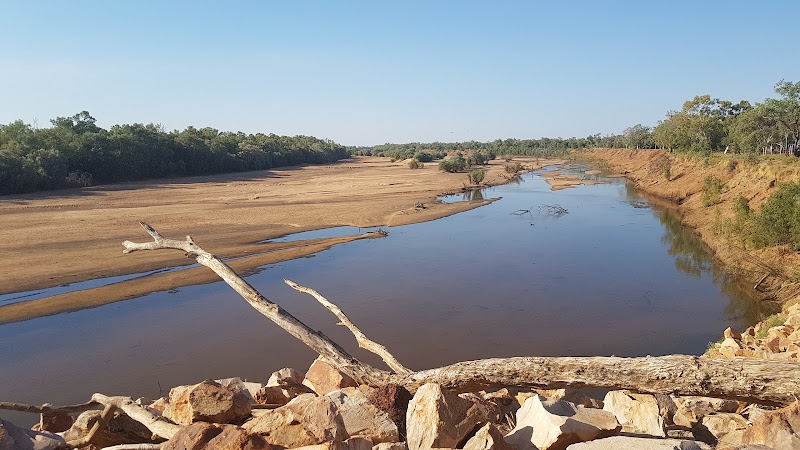
Climbing the Staircase to the Moon: Broome’s Lunar Tide Show
Witness a rare natural event where moonlight and tides craft an ethereal staircase across the mudflats of Broome's Roebuck Bay. This guide prepares you for the practical side of experiencing the Staircase to the Moon, balancing awe with the essentials for exploring the shifting shoreline safely and smartly.
Check Tide and Moon Schedules
Plan your visit around full moons and low tides for the best viewing; this event only happens when those conditions align, usually between March and October.
Wear Slip-Resistant Footwear
Mudflats can be slippery and uneven—waterproof boots with good traction protect your feet and provide safer footing.
Bring a Headlamp or Flashlight
Darkness falls quickly. A light source helps you navigate safely as you explore mudflats once the moon ascends.
Hydrate and Dress in Layers
Temperatures drop at night along the coast. Carry water and wear layers to stay comfortable from dusk into evening.
Climbing the Staircase to the Moon: Broome’s Lunar Tide Show
Along Broome’s rugged coastline in Western Australia, the Staircase to the Moon appears as a fleeting marvel—an optical illusion born of tides, moonlight, and mudflats. This spectacle isn’t a conventional hike but a unique natural event that invites you to navigate the shorelines and shallow flats under the glow of a rising full moon. Here, the moon pulls the tides back sharply, exposing the wet mudflats which mirror its light and seem to form a glowing staircase ascending towards the night sky.
Located on Roebuck Bay, the landscape is fiercely alive during this event. Mudflats stretch outward, daring your footsteps to explore with careful balance; the water’s edge pulses with tidal currents that rush in rhythm with the moon’s gravitational call. The terrain is uneven and slippery, marked by scattered pools and crusted salinity that test your footing more than your stamina. You won’t find steep inclines or towering cliffs here but an evolving, dynamic surface shaped by water, light, and earth.
The event happens only on clear nights from March to October, when the full moon aligns with low tide. Timing is essential: arrive an hour before sunset to watch the first phases of the staircase materialize, and stay for a couple of hours to experience the moon fully ascend. Footwear with good grip and weather-appropriate clothing are vital—this is a coastal environment where temperatures fall quickly after dark, and the ground often holds moisture that challenges stability.
Photographers and nature lovers will find this setting rewarding. The moonlight animates the mudflats into pools of liquid silver, where shadows lengthen and the bay’s wildlife becomes quietly active. Egrets and crabs claim the shore, while the breeze carries the faint brine-rich scent of the ocean mixed with wet earth. It’s a show that demands patience and respect for the environment’s unpredictable nature rather than one of straightforward physical conquest.
Practical preparation is straightforward but crucial: hydration is important, especially if you arrive earlier in the day, and a flashlight will help with safe navigation once darkness deepens. Avoid walking on fragile areas to preserve the bay’s rich ecosystem. The Staircase to the Moon is less about vigorous trekking and more about blending observation with a gentle exploration of a landscape shaped by the planet’s celestial rhythms. This experience rewards those ready to engage attentively, matching steps with tides and gazing upward, grounded in a moment shared between earth and sky.
Nearby Trips
All Adventures
Boat Charters
Water Activities
Adventures near Broome, Western Australia
Discover the unique and memorable adventures that make Broome, Western Australia special.
Frequently Asked Questions
When is the Staircase to the Moon visible in Broome?
The event occurs during full moons coinciding with very low tides, typically from March through October. Exact dates depend on lunar cycles and tidal charts, which should be checked ahead of visit.
Is the Staircase to the Moon a hike or more of a viewing experience?
It's primarily a natural light and tide phenomenon best experienced by walking short distances on mudflats. It's not a traditional hike but requires careful footwork across slippery and uneven surfaces.
Are there any dangers to be aware of while exploring the mudflats?
Yes, the mudflats can be slippery and unstable in places. Incoming tides can advance quickly, so timing and awareness of tidal schedules are crucial to avoid being caught by rising water.
What wildlife might I see during the Staircase to the Moon?
Egrets, shorebirds, mudskippers, and crabs become active around dusk. These creatures add subtle life to the scene while you observe the luminous stairway.
Can I drive close to the Staircase to the Moon viewing spots?
Limited parking is available along the foreshore roads in Broome. Many visitors combine a walk along Town Beach or nearby foreshore parks to access optimal viewpoints.
Is it necessary to book a tour to see the Staircase to the Moon?
No, independent visits are common and feasible. However, guided tours offer added safety and local knowledge about precise timings and photography tips.
Recommended Gear
Waterproof Hiking Boots
Secure footing across slippery mudflats is essential; waterproof boots prevent wet feet.
Flashlight or Headlamp
Provides visibility after darkness, critical for safe navigation on uneven ground.
Layered Clothing
Adjust for coastal chill after sunset and variable spring to winter temperatures.
Reusable Water Bottle
Stay hydrated during long waits under the moonlight; water sources are scarce nearby.
Local Insights
Hidden Gems
- "Chinatown Foreshore Lookout – offers elevated views of the bay and moonlight reflections."
- "Big One Surf Break – visible from the shore, adding dynamic ocean scenery to your visit."
Wildlife
- "Eastern Reef Egret"
- "Fiddler crabs"
- "Mudskippers"
History
"The Staircase to the Moon has been a part of the Yawuru people’s ancestral lands for thousands of years, with tides and moon phases integral to their lore and coastal rhythms."
